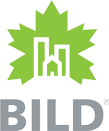
Building New or Renovating Existing Homes, part II
Our previous article explored the financial aspects of constructing a new house versus adding an addition. Today, we'll investigate the construction perspectives of both. It's highly advisable to consult a professional to assess the current home's condition when considering an addition. Sometimes, the existing structure might be so compromised that demolishing and rebuilding from scratch is faster and more feasible. However, a new build, even though it is imminently necessary, might introduce permit-related problems, forcing you to build an addition despite it seeming unreasonable from a construction standpoint. We'll delve deeper into this in the final part of this blog series. For now, let's focus on the construction aspects of both additions and new homes.
The notion that 'new is always better' can be quite debatable. Undoubtedly, new endeavors allow us to learn from past mistakes and get things right the first time. However, the reality of constructing a new home is far from a conveyor belt process. Despite precise planning by architects and engineers, perfection on paper doesn't always translate to reality. This is where the expertise of a professional becomes invaluable. Their years of experience, coupled with tools and materials, bring blueprints to life in the construction trade. Constructing from scratch just simpler than working around an existing structure. Which opens up more options among different trades, each with similar qualifications.
Building codes and practices have evolved in the past. What was once considered 'best construction practices' fifty years ago is now outdated. For instance, 2X4 walls were previously everywhere but are now primarily used for non-bearing partitions. The materials and practices have significantly changed. In the past, brick and block walls were prevalent, which helps us nowadays to build a second floor. However, nowadays, house walls are rarely made from blocks, except for foundations, due to cost and time; as highlighted in an earlier part of this blog series, money is the key to successful construction projects.
Over time, aging houses reveal issues like sunken or uneven floors, leaky basements, insufficient insulation, and structural weaknesses that were initially invisible. Building an addition often involves repairing these problems. Thus, assessing the current house's condition is crucial, ensuring its structural integrity can withstand renovation and support additional floors. Engaging with a professional becomes imperative despite the common issues found in older homes.




